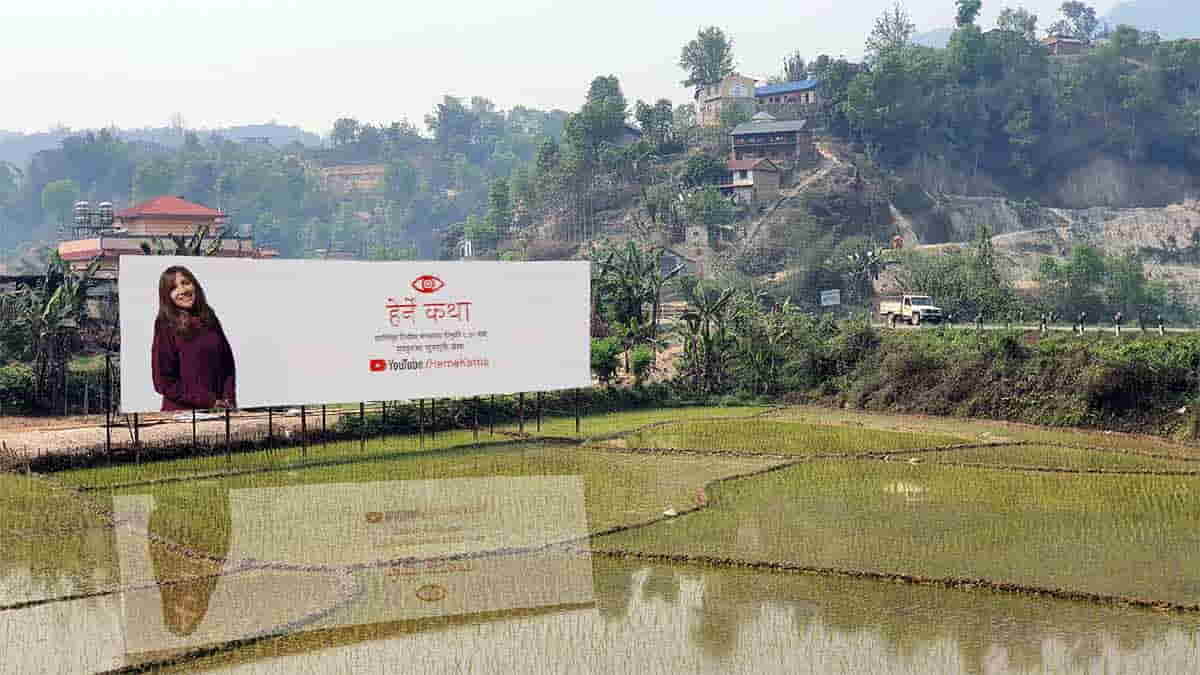Coming across a tweet recently consisting of a photoshopped image, of course, my science-teacher brain noticed something about the image and prompted me to share the question that popped up in my head.
To begin with, here’s the tweet.
पोखरा जाने बाटोमा दमौली कटेपछि म्याग्दे भन्ने रमाइलो ठाउँनिर हेर्ने कथाको ठूलो होर्डिङ बोर्ड याद गर्नुभएको छ?
— Herne Katha (@hernekatha) April 8, 2021
छैन भने ठीक छ । त्यहाँ हाम्रो होर्डिङ बोर्ड छैन । यो त हामीले फोटोसप गरेको 😄 pic.twitter.com/xrQWmRC2Za
The tweet says that they photoshoped the hoarding board and, of course, they made sure to also include a reflection of the board underneath it on the surface of the flooded fields.
Here’s a reproduction of the image.

As you might also be able to tell, the size of the reflection (image) on the surface of the water is exactly the same as the board itself. I made measurements and also confirmed it to be so.
Here is the tweet where I asked the science question about it.
Love this tweet for one b/c I can ask a #science question about their photoshop job! 😀 😀
— Dorje Gurung, ScD (h.c.) (@Dorje_sDooing) April 8, 2021
The #image of the hoarding board underneath appears to be exactly the same size as the board itself.
Is that right? If not, what should it be? Why? #LightAction #Reflection #Refraction https://t.co/miECoGS8VQ
To reiterate the question: Should the image of the hoarding board underneath it be exactly the same size as depicted in the photoshopped image? If so, why? If not, what should it be and why?
Second question: The image on the surface of the water is upside down. Why?
If you would like to learn a bit more about reflection and refraction or to get some help reacquainting with some of the basics of the behaviors and relevant properties of light, try these first:
- Light Entertainment I: About refraction but the simplest of the four.
- Light Entertainment II: About refraction but considerably more challenging than I.
- Light Entertainment III: About refraction but a little different from the above two.
- Light Entertainment IV: About refraction but the most challenging of the four.
Every problem is preceded by a description of all the concepts involved.
Enjoy!
